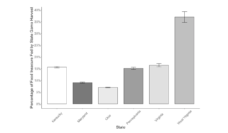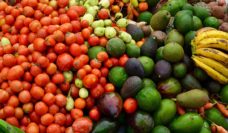More than 46 million Americans rely on food banks. But food access does not ensure healthy eating and good nutrition.
Teresa Bigand and her team explored factors that contribute to healthy eating for people who use food banks and how nurses might help food bank users navigate barriers to healthy eating.
The researchers asked 196 food bank users in the Northwest four open-ended questions regarding healthy eating: 1) “Explain what “following a nutritious and healthy diet” means to you?”; 2) “What thoughts or feelings do you experience when you find yourself eating a non-nutritious diet?”; 3) “When considering the use of food bank resources, what are major challenges you face in following a healthy diet?”; and 4) “Describe what things have helped you be successful in following a healthy diet in recent times.”
Barriers to healthy eating included lack of knowledge on how to cook, lack of time, and lack of transportation and refrigeration. Waiting times at the food bank and lack of transportation to get there were also considered barriers to healthy eating for persons who rely on these community-based food sites.
Facilitators for healthy eating included having access to a doctor, counselor, and caregiver.
Participants also relied on grocery store sales, food stamps, and Meals on Wheels for healthy eating. But finding the right kind of food, the prices of healthy foods, working hours of food banks, and finding a place to cook make healthy eating difficult.
The study team argues that nurses can help food bank users navigate some of these barriers. An important facilitator for healthy eating is having access to a health care provider, and by forming partnerships between food banks and nurses, food bank users might have increased access to a healthcare provider. The authors of the study also argue that nurses can also provide food banks users with knowledge on healthy eating, through nutrition education and cooking classes.
Some nurses already work at food banks conducting health screenings and monitoring the health of the most food insecure populations. The authors make several recommendations to integrate nursing into the treatment of food insecurity. Nurses can advocate for more fresh produce, more community gardens, and more options for safe food storage. They can provide classes on healthy eating including budgeting and cooking healthier meals, tailoring food bank-sourced foods into a healthy diet plan. Nurses can educate food bank users on how healthy eating improves physical and emotional health. And, they can provide health screenings.
A partnership between nurses and food banks may lead to healthier eating among food bank users, alleviating food insecurity. But how can we achieve this partnership when nurses are already working beyond relief and most food banks are volunteer-based?
Photo via Getty Images
This is the final post in a three-part series this month about how food banks and food pantries contribute to food security.














